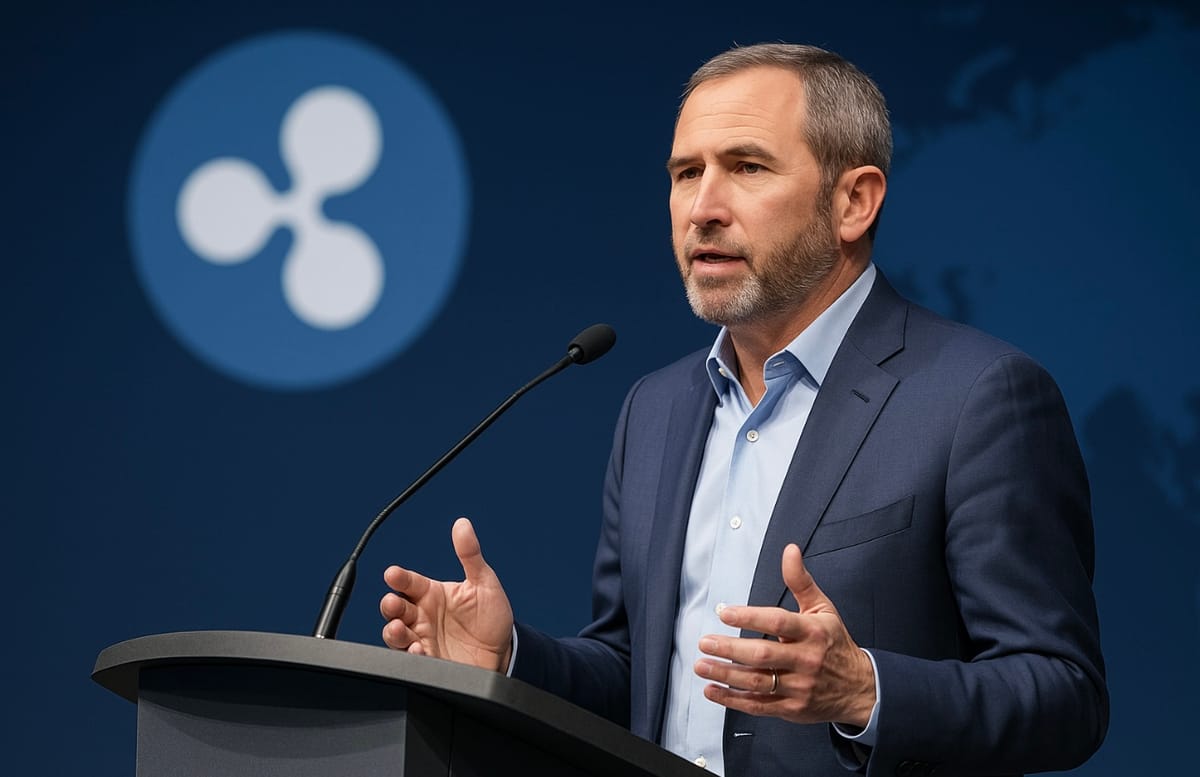Ripple: XRP Set to Capture 14% of Global SWIFT Transactions
XRP is projected to control 14% of SWIFT’s cross-border transaction volume in five years, challenging global payment system dominance.

In a bold statement, Ripple CEO Brad Garlinghouse predicted that XRP could account for up to 14% of SWIFT’s cross-border transaction volume within the next five years. This projection has sent shockwaves through the global financial industry, sparking debate over the future of cross-border payment systems and the long-standing dominance of SWIFT.
Ripple’s Innovation with XRP
Ripple has long been recognized as an innovator in the world of global payments. Unlike SWIFT, which only sends messages between banks without transferring funds in real time, Ripple offers a blockchain-based solution that leverages XRP as an instant liquidity bridge between currencies. Through its On-Demand Liquidity (ODL) technology, Ripple eliminates the need for banks to hold nostro/vostro accounts in multiple countries. This efficiency and speed have become major attractions for financial institutions seeking to cut costs and accelerate cross-border fund transfers.
Why is the 14% Figure So Significant?
SWIFT currently handles over $150 trillion in transactions annually. If Brad Garlinghouse’s projection is realized, approximately $21 trillion per year will flow through the XRP network. This marks a significant shift from conventional messaging systems to a more efficient instant liquidity model. According to several analysts, if such a volume truly moves to XRP, the price of the token could surge significantly as global liquidity needs rise.
Regulatory and Institutional Adoption Challenges
Despite XRP’s enormous growth potential, Ripple still faces major challenges in terms of regulation and institutional adoption. The legal battle between Ripple and the US SEC, ongoing since 2020, has provided legal clarity: XRP is not a security. However, convincing major banks and global regulators to move away from SWIFT and adopt XRP will take time, as well as proof of Ripple’s reliability and security.
Financial Institutions Begin to Take Notice
Over time, more banks and remittance companies have started to evaluate and test Ripple’s ODL system. Transaction speed, cost efficiency, and blockchain transparency are key reasons behind this migration. However, earning the trust and achieving global integration with large-scale financial systems remain Ripple’s next big steps. Industry observers believe that if major institutions like the European Central Bank or BIS start to support XRP, a global payments revolution will become increasingly inevitable.
Transforming the Global Payments System
With its vision, Ripple seeks to shift the paradigm of cross-border payments: from simple message exchange to actual, efficient, and transparent liquidity movement. This transformation is no longer just a dream, but is now propelled by legal momentum, technological innovation, and the need for economic efficiency. Over the next five years, Ripple’s success in penetrating SWIFT’s market share will serve as the main test and benchmark for global financial institutions’ trust in blockchain technology.
Optimism and Challenges
Although Garlinghouse’s projection sounds highly optimistic, analysts note that XRP’s potential is truly massive if the ecosystem rallies behind it. However, real challenges lie ahead: from international regulatory adjustments and global bank adoption, to market education regarding Ripple’s system advantages.
XRP is no longer just a digital token. It has become a symbol of global financial transformation—faster, cheaper, and more transparent. Ripple’s ambition to capture 14% of SWIFT’s transaction volume will remain a primary focus in the world of finance. Will this payment revolution come true? The next five years will be decisive for the future of XRP and the entire global financial system.





Comments ()